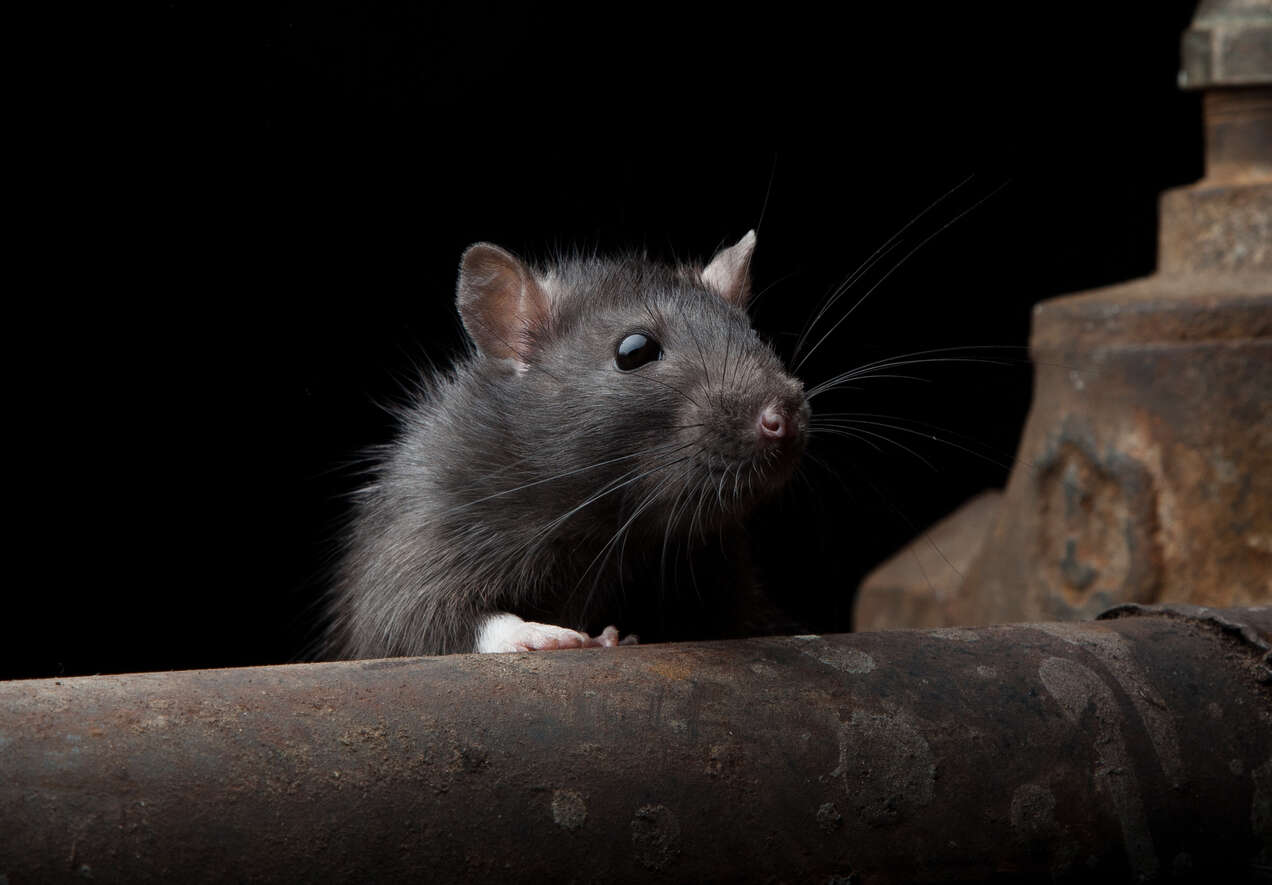Knowing the black rat to catch it better
The black rat (Rattus Rattus) is generally grey-black in colour, with a lighter belly coat. Its adult size, including tail, varies from 35 to 45 cm. The adult black rat weighs between 150 and 250 g. Its life expectancy is 18 to 24 months. This mammal is classified as a “rodent”, which means that it has to gnaw constantly to wear out its incisors, which are constantly growing, just like rabbits. It is a fast and agile animal and an excellent climber. Although its diet is mainly based on cereals, fruits and vegetables, it adapts to its environment and consumes any food source that man makes available to it.

where the black rat lives :
The black rat lives mainly in the countryside, you will find it in barns, food storage rooms. At home, whether you live in the country or in town, you will find them in dry and high places: attics, unfinished attics, in false ceilings, …. In fact, this rodent can nest anywhere in your home as long as there are insulation materials such as glass or rock wool, polystyrene and others.
Black rat Lifestyle :
The black rat lives in a hierarchical community system governed by dominant males. Communities are only a few dozen individuals (20 to 30 individuals). Its territory is restricted and does not exceed a few dozen meters from its nest. It is a “routine” animal; it practically always uses the same traffic corridors where it is used to finding the food it needs.
Black rat reproduction :
A black rat can reproduce from the 3rd month of its existence. Gestation lasts about 22 days and each litter can give birth to up to 12 young that become independent after 4 weeks. If the nesting and feeding conditions are right, the offspring of a pair of rats can range from 150 to 200 individuals in 1 year.
Nuisance cause by black rat :
As you will have noticed from reading this information page or from your own experience following an infestation, the black rat can cause countless nuisances. It is a socially structured animal that always lives in an environment conducive to its development. Its biggest problem, especially with humans, is that its two pairs of incisors are constantly growing and to live properly it must gnaw to wear them out.
The combination of these different factors leads to the following nuisances:
- Damage to your home and its insulation,
- Financial costs of restoring your home,
- Energy costs due to the deterioration of your insulation,
- High risk of electrical shorts and fires,
- Food loss due to nibbling of your food,
- Soiling of your food and your environment due to its urine,
- Health risks following the accidental consumption of food soiled by its urine, – Loss of crops for farms,
- Financial losses for food storage companies,
- Financial losses for food distribution shops,
- Transmission of serious diseases such as Leptospirosis and Salmonellosis,
- Possibility of causing asthma attacks and various allergies.
For all these reasons we strongly advise you to solve your infestation problem by trusting one of the [Pest Control providers] present on our directory or to provide you with [materials and products] available from our British partner.
How to treat Black Rat infestations
There are 2 methods of treatment for black rat infestations:
I, Mechanical treatments:
Mechanical treatment consists of using non-toxic traps that have an immediate visual effect.
If you are not in a “food zone” regulated by a health organization, we strongly advise against the use of glue boards, as the rats will always find the physical strength to escape, which will reduce your rat control campaign to nothing.
The use of rat traps, cages, or other types of traps will have a much better yield provided they are well placed on the rodents’ paths and that you use a good bait (your children’s spread will be of the best effect) and that you “adjust” the sensitivity of your traps well. If you have the possibility, make sure that the rodents, attracted by your bait, do not move your traps, which would cause an unwanted closure.
II, Chemical Treatment
Chemical treatment is the treatment with poisons. For maximum effectiveness, it is advisable not to use grain, as the toxic concentration is only found on the grain shell, which greatly limits its effectiveness. Waterproof blocks have the advantage of being more effective because the toxic concentration is in the “mass” of the bait. The only disadvantage is that they are not very attractive to rodents.
The best product is “Fresh Paste” (if it is less than 6 months old) because not only is the toxic concentration in the “mass” of the product used, but if it is fresh it is very palatable because it is perfectly scented to attract your black rats.
Whatever type of product is used, it must be placed in baiting stations, secured with a key, in order to avoid any undesirable poisoning incidents with non-target animals and children. Bait stations should be placed along rodent paths at a distance of about 6 meters from each other. For your treatment to be effective you should check your bait stations once a week and refill them with product until consumption has ceased.

